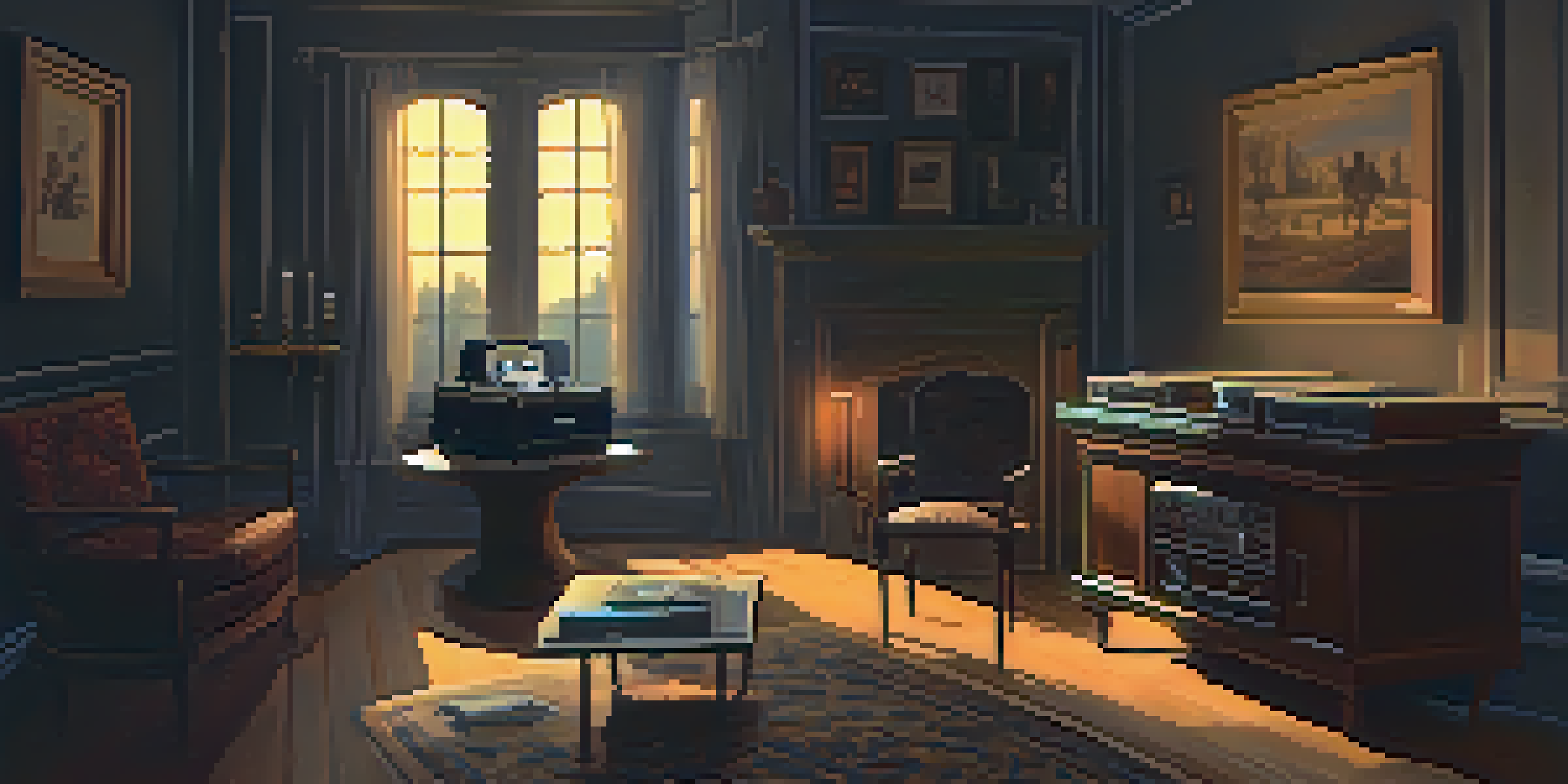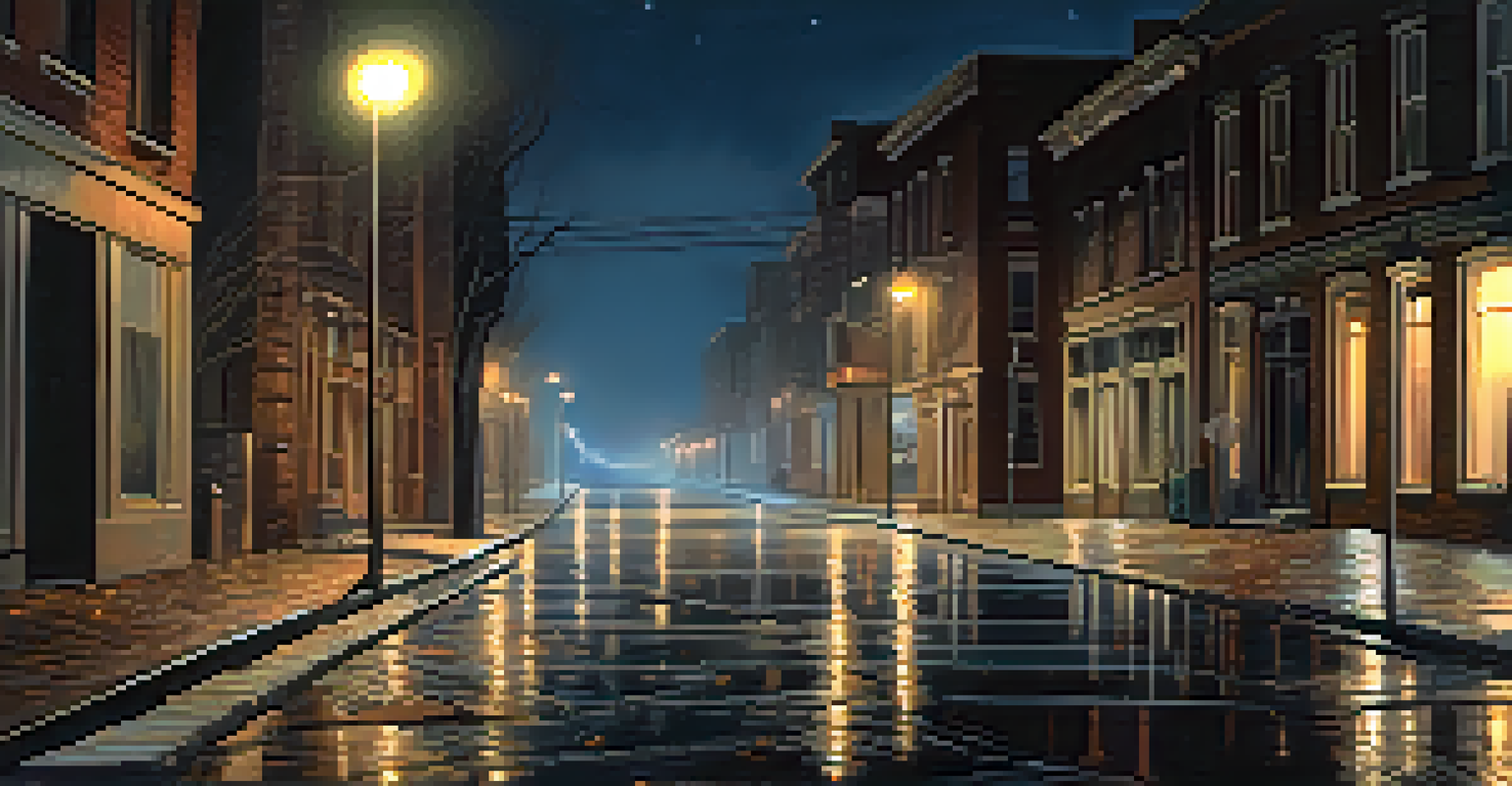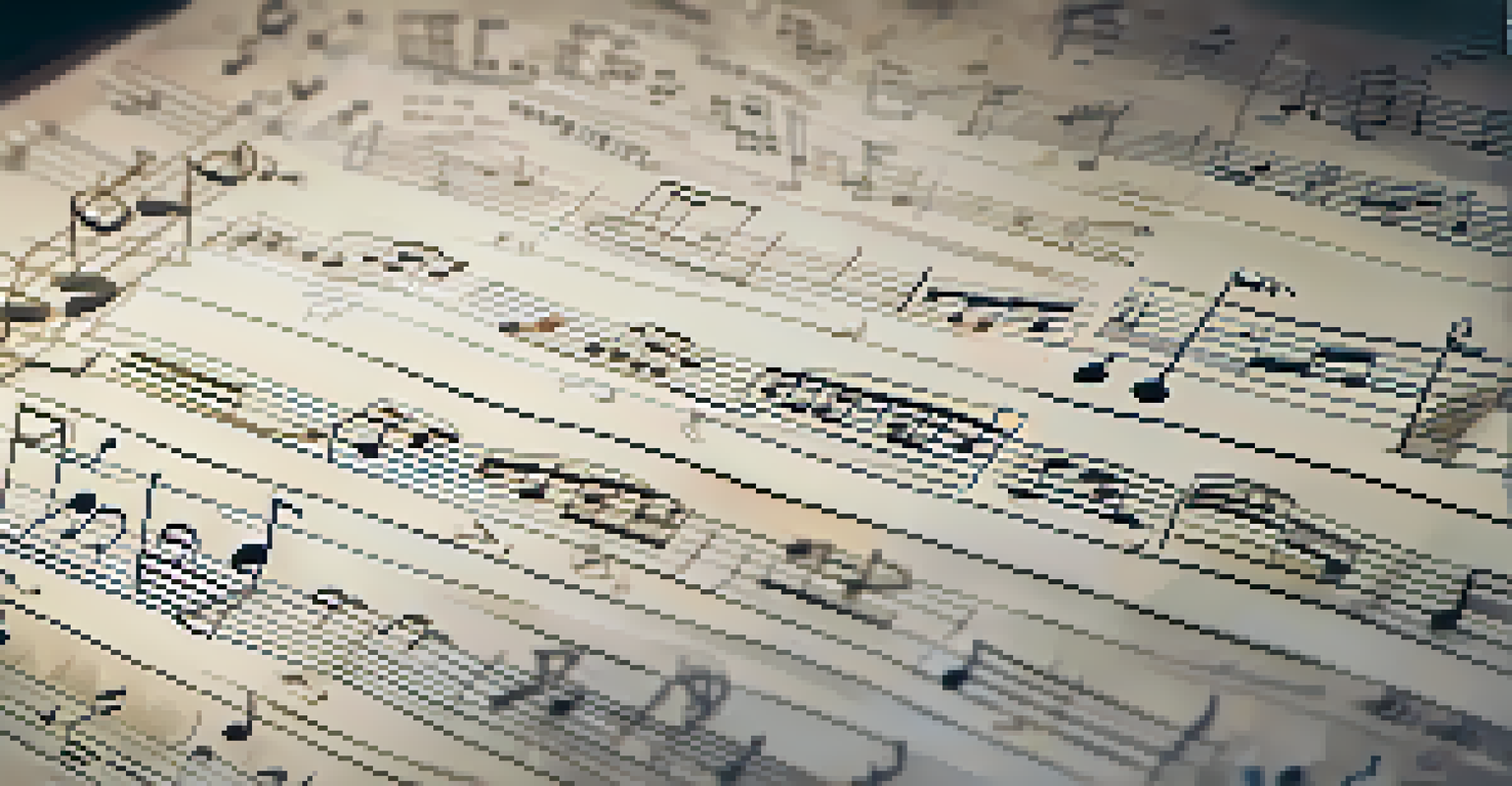How Film Scores Elevate Tension and Suspense in Thrillers

The Vital Role of Film Scores in Thrillers
Film scores are more than just background music; they play a crucial role in setting the tone and atmosphere of a film. In thrillers, where every second counts, the right score can elevate the stakes and immerse the audience into the world of suspense. Think of it like the heartbeat of the film, subtly guiding viewers through moments of tension and release.
Music can change the world because it can change people.
A well-composed score can evoke emotions that visuals alone might not convey. For instance, the ominous strings in a scene can create a sense of dread, making viewers instinctively hold their breath. This emotional layering encourages deeper engagement, pulling the audience into the narrative and enhancing their overall experience.
Moreover, film scores can manipulate pacing, allowing directors to control when tension peaks and when it subsides. By using crescendos and sudden silences, composers can make viewers feel the weight of every moment, whether it’s a quiet suspenseful build-up or an explosive confrontation.
Creating Atmosphere with Sound Design
Sound design is integral to film scoring, especially in thrillers where atmosphere is key. It’s not just about melodies; it includes ambient sounds that create a rich sonic landscape. Imagine the chilling sound of wind howling through an empty street, which can evoke feelings of isolation and fear, setting the stage for suspenseful moments.

Incorporating unexpected sounds can also heighten tension. A sudden creak of a floorboard or the distant sound of a siren can jolt the audience, making them more alert and engaged. This unpredictability keeps viewers on the edge of their seats, as they anticipate what might happen next.
Film Scores Shape Thrilling Atmosphere
The right film score enhances the tone and suspense of thrillers, immersing audiences in the narrative.
Furthermore, sound design can reflect a character's internal state, adding another layer of depth to the narrative. For instance, a character experiencing anxiety might be accompanied by a dissonant score, mirroring their turmoil and enhancing the viewer's connection to their plight.
The Use of Motifs to Signal Threats
Motifs are recurring musical themes that can signal impending danger in thrillers. Composers often create specific motifs associated with a character or threat, allowing audiences to recognize them instantly. This technique builds anticipation and heightens emotional responses, as viewers learn to associate certain sounds with danger.
The music is not in the notes, but in the silence between.
For example, in 'Jaws', the iconic two-note motif signifies the approach of the shark, instantly triggering tension. Every time that music plays, audiences brace for impact, knowing something terrifying is on the horizon. This familiarity with musical cues enhances the overall suspense, making each moment feel more urgent.
Additionally, the strategic placement of these motifs can serve as a narrative device, foreshadowing events to come. When a motif resurfaces, it can evoke past fears, reminding viewers of previous chilling encounters and reinforcing the film's overarching tension.
Pacing: Building and Releasing Tension
Pacing is a crucial element in thrillers, and film scores play an essential role in manipulating it. Composers can create tension through rapid, frenetic rhythms, which can make scenes feel more chaotic and urgent. This rhythmic intensity often mirrors the characters' experiences, amplifying the viewer's emotional response throughout the film.
Conversely, a sudden slowdown in the score can lead to moments of suspense, creating a breath-holding effect. These quiet moments allow the audience to feel the weight of anticipation, making the eventual payoff even more impactful. Think of it as the calm before the storm, where every silence is pregnant with possibility.
Sound Design Amplifies Tension
Effective sound design, including ambient noises and unexpected sounds, creates a rich landscape that keeps viewers engaged and on edge.
Ultimately, the balance between building and releasing tension through music keeps audiences engaged. A well-timed shift in the score can transform a mundane scene into a heart-pounding experience, demonstrating the power of sound in storytelling.
The Emotional Impact of Dissonance
Dissonance in music creates a sense of unease, making it a powerful tool in thriller film scores. Composers often use dissonant chords to evoke discomfort, subtly signaling to the audience that something is amiss. This technique can elevate tension without the need for visual cues, allowing viewers to feel a growing sense of dread.
For instance, a character may be navigating a seemingly safe environment, but dissonant undertones can suggest lurking danger. This juxtaposition creates an unsettling atmosphere, prompting the audience to question the safety of the character and heightening their emotional investment in the story.
By skillfully blending dissonance with more harmonious elements, composers can create a rich emotional tapestry. This complexity keeps viewers engaged, as they are constantly navigating between feelings of hope and fear, ultimately enhancing the cinematic experience.
Silence: The Power of Absence in Thrillers
Silence can be just as powerful as a dramatic score in creating tension in thrillers. Strategic pauses in music allow the audience to feel the weight of a moment, drawing attention to what's happening on screen. This absence of sound can amplify the suspense, making viewers hyper-aware of every little detail.
For example, a sudden silence just before a shocking revelation can create a heightened state of anticipation. Audiences often find themselves holding their breath, waiting for what will happen next, as the tension builds to a breaking point. This technique can be incredibly effective in drawing viewers deeper into the narrative.
Motifs Signal Danger Ahead
Recurring musical motifs can signal impending threats, building anticipation and heightening emotional responses in the audience.
Moreover, silence can serve as a contrast to the score, making moments of music feel even more impactful. When music returns after a silence, it often carries a greater emotional weight, reinforcing the tension and amplifying the overall experience.
Case Studies: Iconic Thrillers and Their Scores
Several iconic thrillers exemplify how film scores enhance tension and suspense. For example, 'Psycho' features Bernard Herrmann's chilling score, which is integral to the film's atmosphere. The infamous shower scene, accompanied by sharp, staccato strings, has become synonymous with cinematic horror, showcasing how music can evoke primal fear.
Another great example is 'The Silence of the Lambs', where Howard Shore's score cleverly combines eerie melodies with unsettling silence. The music highlights key moments, such as Clarice Starling's encounters with Hannibal Lecter, creating a palpable tension that keeps viewers on edge throughout the film.

These case studies illustrate that a film's score is not just a complement to its visuals but a vital component of storytelling. By analyzing how these scores function within their respective narratives, we can appreciate the artistry behind film scoring and its profound impact on viewer experience.